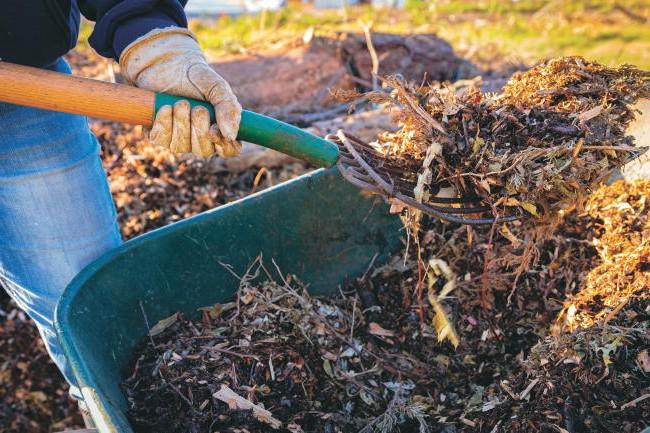Summer is just around the corner, and with better weather comes more opportunities to enjoy your garden. If your garden is looking a bit wild, now is the time to tame it. After all, you don’t want to dread having visitors over on sunny summer afternoons.
If you’re unsure of how to tackle your garden, the steps below from Greenhouses Direct will help you restore order and make your garden enjoyable again.
Planning and strategies
Assess your space first and foremost. The garden size will determine how long it will take you to clear it. It’s a good idea to make a gardening rota for tracking planting, watering, and pruning to avoid confusion and overgrowth.
Declutter
Overgrown bushes, trees and weeds make garden space seem cluttered, not to mention other items lying about. Get items such as toys and tools out of the way before you start on the plants themselves.
Once you have a clear space, begin with weeding. Weeding is unavoidable and it is healthy for a garden. To begin, start by pulling out the existing weeds and picking up debris.
Prune
After you’ve finished weeding, it’s time to tackle trees and shrubs. If left to grow out of control, they will become unhealthy and look unappealing.
Prune trees (by removing oddly growing or dead branches) and shrubs back. Assess any plants growing out of proportion and decide whether to move them or cordon them off, either by containing them or using edging techniques.
Plants such as hydrangeas, forsythia, honeysuckle, lilac, and spirea have strict pruning schedules. Start pruning them early in the spring when you can trim them as low as you want. This will give them a good head start to rejuvenate and produce stunning blooms.
Other plants like witch hazel, rosemary or viburnum, can only be pruned in stages. It’s sometimes best to consult a specialist to help you.
Tools
You will need a pair of secateurs for pruning, a light lawnmower, a hoe for purging borders of weeds, a broom for sweeping patios and paths, and an electric hedge trimmer for hedges. A ride-on lawnmower may be a good investment if you have a large lawn.
A padded kneeling mat will help take pressure off the knees and gardening gloves will prevent scrapes. Rakes, spades, wheelbarrows, clippers, and hedgers are all useful tools.
Edging
Keep the garden neat by defining it with a clean edge. A boundary between the lawn and garden defines where the garden starts and draws the eye there. You don’t always have to cut edges into the soil – sometimes it’s easier to use an edging material such as wooden poles or rocks.
Mulch
Mulch is a layer of natural material applied to the soil’s surface. Mulching ensures moisture-retentive soil and reduces weed growth. There are many different types of mulch, from tree bark to pebbles.
Paving
Incorporating pavers as a walkway or patio is attractive and cuts down on the maintenance required for ground cover, lawn and flower beds. Structures such as water fountains are also low-maintenance, requiring occasional cleaning and upkeep.
A rock garden is a unique attraction. A large feature such as a greenhouse, gazebo or pavilion will cover some planting space but still connect you to the outdoors.
Choosing plants
Before adding new plants, research care requirements and growth patterns.
A vigorously growing plant may flourish where it has plenty of room to grow. A row of shrubs may impede a garden path, but will suit as a boundary at the rear of the garden. Instead of removing plants, relocate them to a more appropriate spot.
Read more
Gardening with Gerry: terrific triplet lily and thinning vegetables
Mary’s Garden Diary: growing acid-loving plants in an alkaline garden
Summer is just around the corner, and with better weather comes more opportunities to enjoy your garden. If your garden is looking a bit wild, now is the time to tame it. After all, you don’t want to dread having visitors over on sunny summer afternoons.
If you’re unsure of how to tackle your garden, the steps below from Greenhouses Direct will help you restore order and make your garden enjoyable again.
Planning and strategies
Assess your space first and foremost. The garden size will determine how long it will take you to clear it. It’s a good idea to make a gardening rota for tracking planting, watering, and pruning to avoid confusion and overgrowth.
Declutter
Overgrown bushes, trees and weeds make garden space seem cluttered, not to mention other items lying about. Get items such as toys and tools out of the way before you start on the plants themselves.
Once you have a clear space, begin with weeding. Weeding is unavoidable and it is healthy for a garden. To begin, start by pulling out the existing weeds and picking up debris.
Prune
After you’ve finished weeding, it’s time to tackle trees and shrubs. If left to grow out of control, they will become unhealthy and look unappealing.
Prune trees (by removing oddly growing or dead branches) and shrubs back. Assess any plants growing out of proportion and decide whether to move them or cordon them off, either by containing them or using edging techniques.
Plants such as hydrangeas, forsythia, honeysuckle, lilac, and spirea have strict pruning schedules. Start pruning them early in the spring when you can trim them as low as you want. This will give them a good head start to rejuvenate and produce stunning blooms.
Other plants like witch hazel, rosemary or viburnum, can only be pruned in stages. It’s sometimes best to consult a specialist to help you.
Tools
You will need a pair of secateurs for pruning, a light lawnmower, a hoe for purging borders of weeds, a broom for sweeping patios and paths, and an electric hedge trimmer for hedges. A ride-on lawnmower may be a good investment if you have a large lawn.
A padded kneeling mat will help take pressure off the knees and gardening gloves will prevent scrapes. Rakes, spades, wheelbarrows, clippers, and hedgers are all useful tools.
Edging
Keep the garden neat by defining it with a clean edge. A boundary between the lawn and garden defines where the garden starts and draws the eye there. You don’t always have to cut edges into the soil – sometimes it’s easier to use an edging material such as wooden poles or rocks.
Mulch
Mulch is a layer of natural material applied to the soil’s surface. Mulching ensures moisture-retentive soil and reduces weed growth. There are many different types of mulch, from tree bark to pebbles.
Paving
Incorporating pavers as a walkway or patio is attractive and cuts down on the maintenance required for ground cover, lawn and flower beds. Structures such as water fountains are also low-maintenance, requiring occasional cleaning and upkeep.
A rock garden is a unique attraction. A large feature such as a greenhouse, gazebo or pavilion will cover some planting space but still connect you to the outdoors.
Choosing plants
Before adding new plants, research care requirements and growth patterns.
A vigorously growing plant may flourish where it has plenty of room to grow. A row of shrubs may impede a garden path, but will suit as a boundary at the rear of the garden. Instead of removing plants, relocate them to a more appropriate spot.
Read more
Gardening with Gerry: terrific triplet lily and thinning vegetables
Mary’s Garden Diary: growing acid-loving plants in an alkaline garden










SHARING OPTIONS